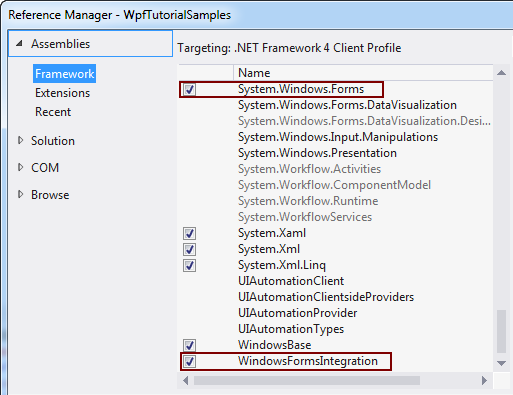

when the Back or Forward button is clicked

Private void WebView21_NavigationStarting(object sender, CoreWebView2NavigationStartingEventArgs e) Private void WebView21_NavigationCompleted(object sender, CoreWebView2NavigationCompletedEventArgs e) WebView21.NavigationStarting += WebView21_NavigationStarting ĭebug.WriteLine("Info: leaving webView21_CoreWebView2Ready") WebView21.NavigationCompleted += WebView21_NavigationCompleted subscribe to events (add event handlers) - WebView2 subscribe to events (add event handlers) - CoreWebView2 Private void webView21_CoreWebView2Ready(object sender, EventArgs e)ĭebug.WriteLine("Info: webView21_CoreWebView2Ready") Private void CoreWebView2_NavigationCompleted(object sender, CoreWebView2NavigationCompletedEventArgs e) Private void CoreWebView2_Histor圜hanged(object sender, object e)ītnForward.IsEnabled = webView21.CanGoForward Private void btnStop_Click(object sender, RoutedEventArgs e) Private void btnGo_Click(object sender, RoutedEventArgs e) WebsiteNavigate(webView21, textBoxAddressBar.Text) Private void textBoxAddressBar_KeyDown(object sender, KeyEventArgs e) Private void btnForward_Click(object sender, RoutedEventArgs e) Private void btnBack_Click(object sender, RoutedEventArgs e) wv.Source = new Uri(tempDest, UriKind.Absolute) if not, pre-pend with " or " //set value URL must start with one of the specified strings If (wv != null & wv.CoreWebView2 != null) Private void WebsiteNavigate(WebView2 wv, string dest) ("Cache data folder set to: " + tempWebCacheDir) WebView2Environment = await CoreWebView2Environment.CreateAsync(null, tempWebCacheDir, options) Īwait wv.EnsureCoreWebView2Async(webView2Environment) webView2Environment = await Files (x86)\Microsoft\Edge Dev\Application\85.0.564.8", tempWebCacheDir, options) TempWebCacheDir = System.IO.Path.Combine(tempWebCacheDir, ().ToString("N")) TempWebCacheDir = System.IO.Path.GetTempPath() get fully-qualified path to user's temp folder If (String.IsNullOrEmpty(tempWebCacheDir)) Public async Task InitializeCoreWebView2Async(WebView2 wv, string webCacheDir = "")ĬoreWebView2EnvironmentOptions options = null ĬoreWebView2Environment webView2Environment = null Public async Task InitializeCoreWebView2Async()ĭebug.WriteLine("Info: before EnsureCoreWebView2Async") Īwait webView21.EnsureCoreWebView2Async() ĭebug.WriteLine("Info: after EnsureCoreWebView2Async") WebView21.Source = new Uri("", UriKind.Absolute) navigate to URL by setting Source property

Private async void Window_Loaded(object sender, RoutedEventArgs e)ĭebug.WriteLine("Info: before InitializeCoreWebView2Async") Īwait InitializeCoreWebView2Async(webView21, after InitializeCoreWebView2Async") / Interaction logic for MainWindow.xaml This operation failed because the QueryInterface call on the COM component for the interface with IID '' failed due to the following error: No such interface supported (Exception from HRESULT: 0x80004002 (E_NOINTERFACE)).Īt (Object objSrc, IntPtr pCPCMD, IntPtr& ppTarget, Boolean& pfNeedsRelease)Īt ._Bounds(tagRECT Bounds)Īt .t_Bounds(Rect value)Īt .WebView2.c_Displa圜lass25_0.g_Init|0>d.MoveNext()Īt .Throw()Īt .HandleNonSuccessAndDebuggerNotification(Task task)Īt .GetResult()Īt _1.MoveNext() in C:\Users\yuandjin\source\repos\ExcelAddIn1\:line 20 Now, paste the code, given below, at MainWindow.xaml under Grid or drag and drop the WindowsFormHost tool.Message=Unable to cast COM object of type 'System._ComObject' to interface type '.Raw.ICoreWebView2Controller'. Step 3: Add the following namespacing too, Here, you can find both the reference files that are added under references. Step 2: Right click on the references and add the following reference files:Ĭlick here to know about WindowsFormsIntegeration Namespace.Ĭlick here to know about Namespace
VISUAL STUDIO VSTO PROJECT ADD WPF WINDOW WINDOWS
Step 1: Run Visual Studio 2015 -> Visual C# -> Windows -> WPF Application It is a GUI (Graphical User Interface) class library, which allows us to write the rich looking Client Applications for tablets, laptops and Desktops.įollow the following steps to add Winforms in WPF: Here, we will be working with adding Windows Forms in Windows Presentation Foundation (WPF)


 0 kommentar(er)
0 kommentar(er)
